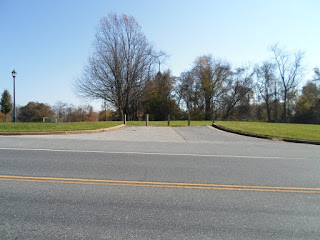Secondly, for those who haven't checked it out yet, I did come up with a new feature for the MCH History Blog Facebook page. Twice, so far, I've posted a This Day in Mill Creek Hundred History feature. While I don't have enough stuff to do this every day, I hope to have something to put up at least a couple times a week. If the item of the day is connected to a past blog post, I'll provide a link to the post. Unless I'm mistaken, everyone should be able to view the Facebook page, whether or not you have a FB page of your own. If you do have your own page, you can comment on the MCH FB page and/or "Like" it, too.
Finally, you may or may not have noticed, but the little counter at the bottom of the page recently passed 25,000 visits to the blog. Now, I realize that not every one of those visits was someone coming here intentionally to read, but on the other hand that count doesn't go all the way back to the beginning of the blog, either. Any way you look at it, 25,000 visits is an arbitrary number for sure, but just as good a reason as any for stopping to say, "Thanks". My heartfelt thanks goes out to everyone who has contributed to, commented on, or just stopped by to read the blog. It makes it a lot easier and more fun to do this knowing there are others who enjoy this stuff, too. Thanks.
Recent Comments:
My mistake - this information pertains to the Old Stone Hotel in Stanton.
I knew the clowns, or the group, that burned the barn down and it was in the mid 1980s
Anonymous November 22, 2012 2:22 PM
From the picture of the lane leading to the former site of the Foote house, one might speculate that a spring house also may have been located nearby. The headwater...


Harry Riblett is my Dad. He is a published author and consultant on airfoil design. He and his brothers are pilots by hobby. I can remember my Uncle Richie landing helicopters...
Anonymous December 4, 2012 11:11 AM
Interesting. As a Dempsey, it is very interesting to learn the history.
Larry T November 27, 2012 7:35 PM
I also grew up in Sherwood 2, I must be older than Vic C. The property on both sides of McKennans used to be state property/ prison farm. After closing the prison farm, the state sold...
Scott P November 27, 2012 10:07 AM
Thanks, Vic. Good to know. So unless the house was small and overgrown, then it sounds like the barn lasted longer than the house did. In either case, it...
Anonymous November 26, 2012 12:45 PM
I grew up in Sherwood Park II. I don’t remember the house but I do recall an old barn back there. Older kids would go there to smoke. We roamed about the overgrown fields quite often. It was...
Anonymous November 24, 2012 12:02 PM